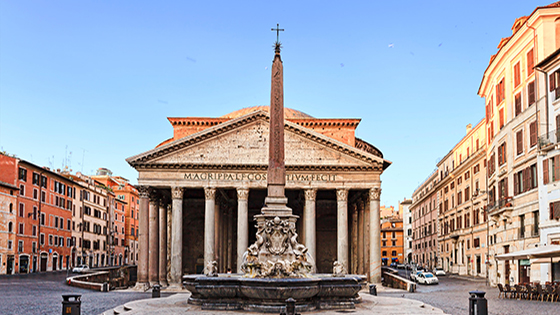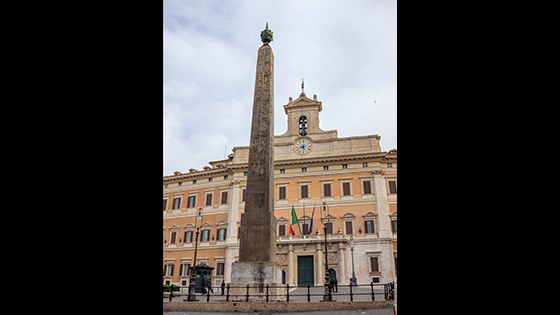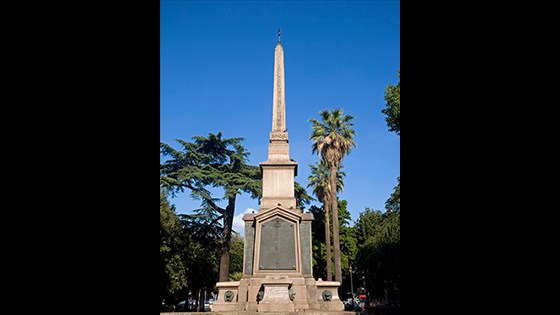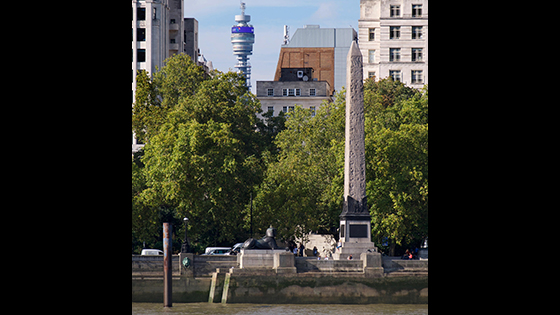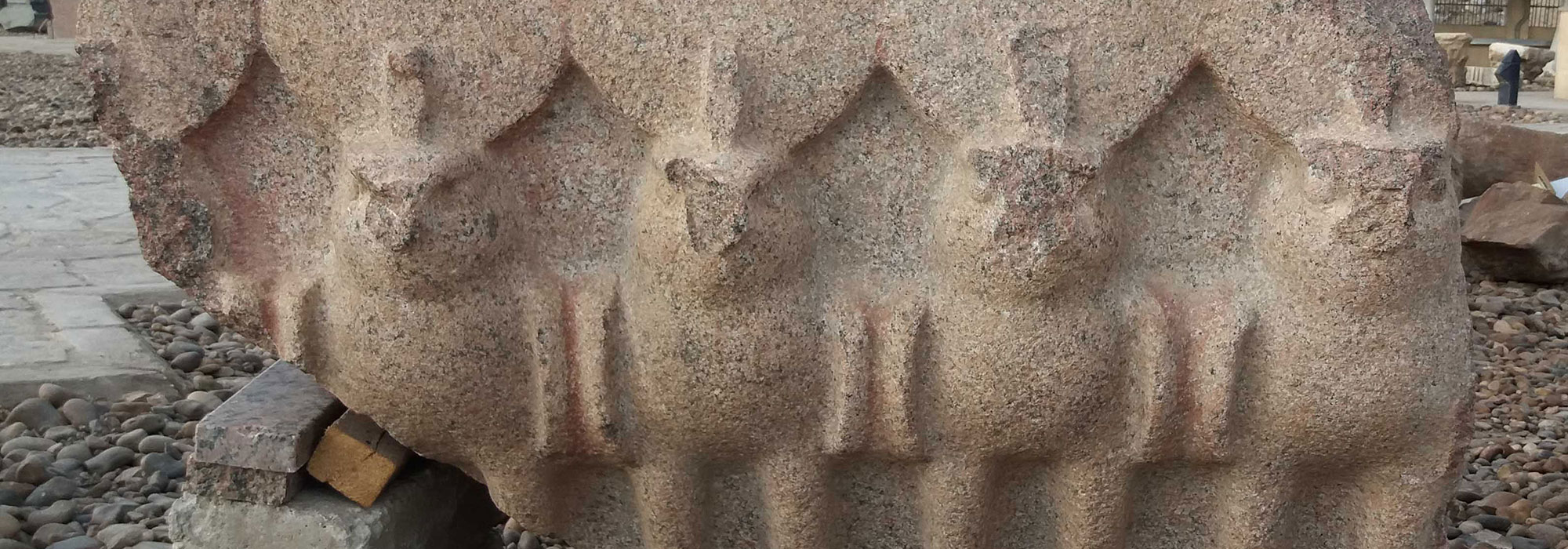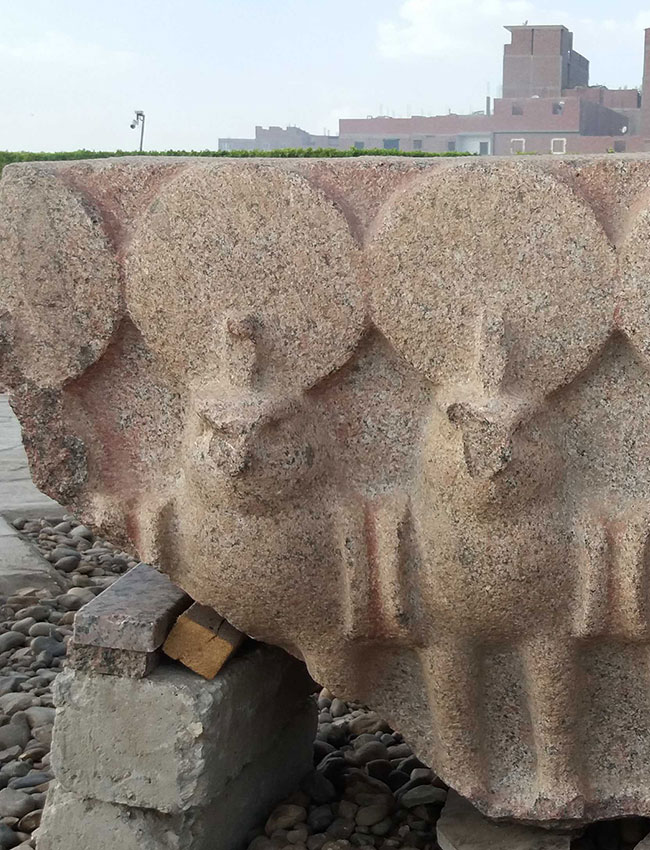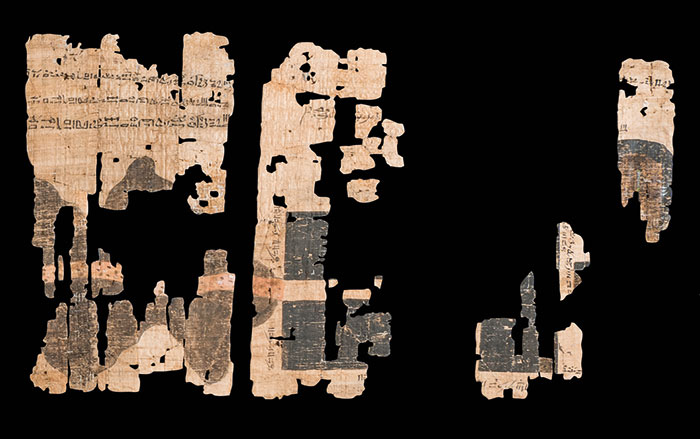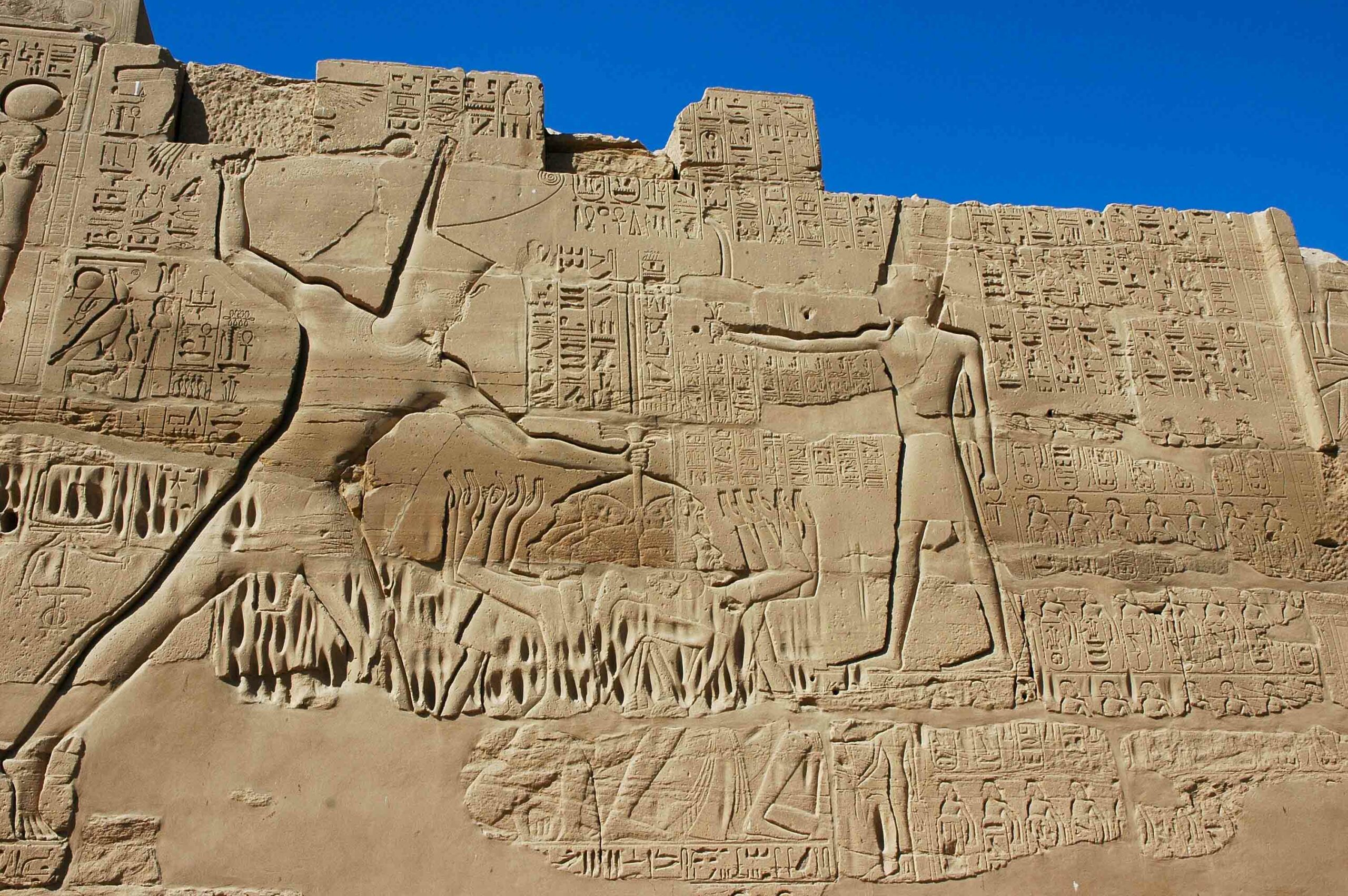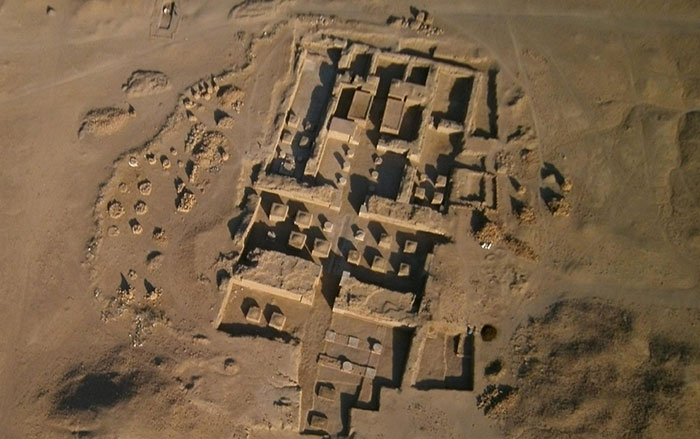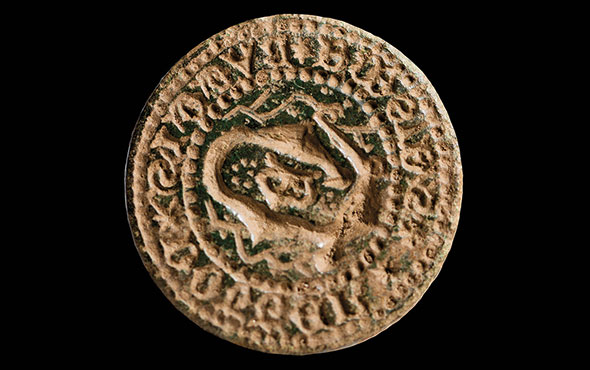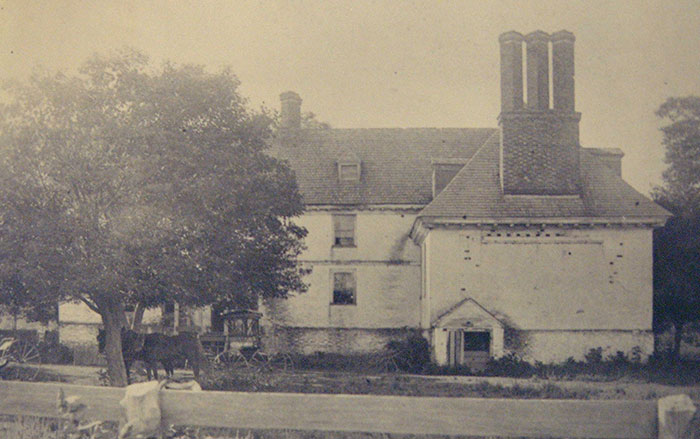
As geographical guides, creation myths can be unhelpfully vague. Christians, Jews, and Muslims have long searched in vain for the location of the Garden of Eden. For the ancient Egyptians, things were a bit easier. The world, they believed, began on a low hill just outside modern-day Cairo. There the sun rose for the first time and made order out of a roiling sea of elemental chaos. There the Egyptian creator, Atum, and sun god, Ra, first appeared, and there they held court for millennia. And there the Egyptians built their most enduring sacred site, a city known today by its Greek name, Heliopolis, or City of the Sun. At the center of the city, contemporaneous sources and recent archaeological excavations show, was the Temple of the Sun.
Egyptians worshipped at Heliopolis over the course of countless lifetimes and thousands of years. The earliest known temples there date back nearly 4,600 years, to the first days of Egypt’s pyramids. Inscriptions reveal that generations of pharaohs bolstered their claim to have descended from Atum and Ra by building grand shrines there. At its peak around 1200 B.C., the holy site was marked with dozens of colossal obelisks.
Heliopolis was known far and wide in antiquity. Called On in Hebrew, the city is mentioned multiple times in the Old Testament. It also served as a reference point for other Egyptian sacred sites. Although Thebes, Egypt’s capital during the Middle and New Kingdoms (ca. 2030–1070 B.C.), is now far better known, ancient Egyptian sources referred to it as the “Heliopolis of the South,” and its temples were modeled on those at Heliopolis. Even in its final centuries, Heliopolis was a popular destination supposedly visited by the Greek philosopher Plato, according to an account written four centuries later by the geographer and historian Strabo. Strabo also includes a first-person account of his own visit to the site’s nearly deserted ruins in his book Geographica.
Both physically and theologically, Heliopolis was at the heart of Egyptian religion. It was both city and temple, every corner of it holy, but also filled with everyday activity. “You can compare it to the very center of Vatican City,” says archaeologist and University of Leipzig Egyptian Museum curator Dietrich Raue. “Everyone inside the city was somehow connected to the sun cult or temple.”
Yet today, Heliopolis is virtually unknown. After almost two and a half millennia of continuous worship there, the importance of its temples declined. By the second century B.C., the city was abandoned, for reasons archaeologists are still trying to discern. It was subsequently plundered and stripped of anything that could be burned or reused. Beginning in the late Roman period, nearly all of its limestone architecture was carted away to build Cairo, leaving little to see above the surface. Over time, most of the city’s obelisks were removed, carried off first to decorate Alexandria, and then to Rome, Paris, London, and even New York (see “The Obelisks of Heliopolis”). Only one still stands at the center of the site, a 68-foot-tall red granite monument erected by Senwosret I around 1950 B.C. that juts out of the ground in the impoverished Cairo neighborhood of Matariya like a hieroglyph-inscribed spike. By the 1800s, Heliopolis had all but vanished under the silt that builds up during the Nile’s annual floods. It was buried under farm fields on the outskirts of Cairo. What was left of Heliopolis is now covered by between six and 20 feet of soil and debris. “It’s extraordinary that one of the most famous cities of the ancient world is now a ghost of a name,” says Stephen Quirke, head of the Petrie Museum at the University of London. “It’s a black hole in our knowledge of ancient Egypt. Heliopolis is the great site.”
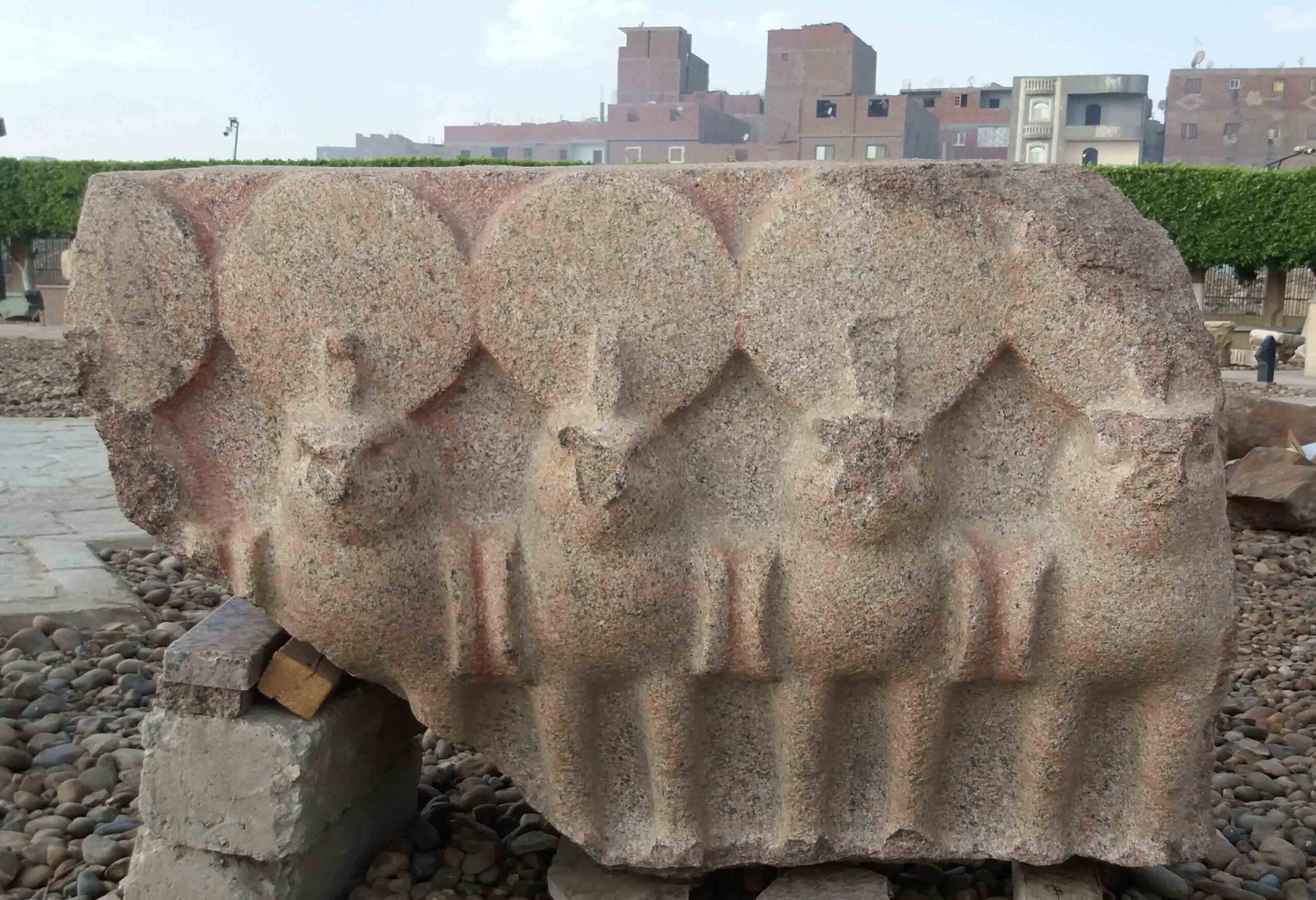
Heliopolis’ fate wasn’t unique. Many ancient Egyptian metropolises, including Thebes and Memphis, were also abandoned and later covered over by modern settlements or fields. There was little interest among early Egyptologists in exploring these urban sites. Quirke traces this to the fact that scholars of the eighteenth, nineteenth, and much of the twentieth centuries were more intent on discovering inscribed temples and tombs than the cities and urban environments that surrounded them. Furthermore, by this time, most of Heliopolis was long gone. “If you’re looking for standing monuments, you don’t come to Heliopolis,” Quirke says.

Still, the city was never truly lost. Napoleon’s forces fought at Heliopolis in March of 1800, and contemporary paintings of the battle often include its ruins and lone surviving obelisk. As recently as the early 1900s, the outlines of its walls were visible, and anyone studying ancient Egyptian religion or royalty would have recognized it from ample references in ancient texts. In the later twentieth century, Egyptian authorities protected the site from development. Much of Heliopolis’ central temple precinct was owned by Egypt’s government and was left undisturbed as Cairo grew to the north. The large nearby necropolis—the final resting place of many of the ancient city’s priests, workers, and officials—was protected by heritage laws that required archaeological excavation before any new construction. A nearby suburb was named Heliopolis in the ancient city’s honor, but a small open-air museum and the solitary obelisk were all that remained above ground to mark the location of the sacred site. “The area was completely empty and waiting for archaeologists,” says geophysical archaeologist Tomasz Herbich of the Polish Academy of Sciences. “Unfortunately, archaeology wasn’t interested.” While Egyptian archaeologists from Cairo University and the Supreme Council of Antiquities worked on the site’s edges and conducted salvage excavations in the surrounding neighborhood, foreign archaeologists flocked to more accessible sites elsewhere in Egypt. Until, that is, Dietrich Raue came along.
As an Egyptology student at the University of Heidelberg in the early 1990s, Raue found his mind wandering as he toiled over a difficult early Middle Egyptian translation in the library. He recalls staring at the stacks surrounding him and his eye lighting on an enticing name: Heliopolis. The volume he saw was a report on early work conducted by Egyptian archaeologist Abdel-Aziz Saleh, who documented a small corner of the site in the 1970s. Other accounts included that of an Italian team that worked in Heliopolis for a few years in the early 1900s. A report by pioneering British Egyptologist W. M. Flinders Petrie, who spent a number of weeks excavating and sketching the ruins in 1912, described the excavation of obelisk fragments, statue heads, and amulets, all of which had once decorated the city’s temples. But when Raue searched for more information, he came up empty-handed. “I remember thinking there must be many more books,” he says. “But those were the only ones.”
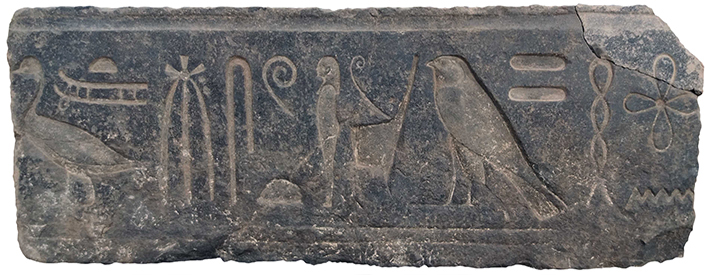
A few years later, the doctoral student was looking for a niche of his own in the crowded field of Egyptology. On his way to work at the pyramids of Dahshur south of Cairo, he thought back to his experience in the library. Arriving in Egypt a few days early, he visited Heliopolis. To his surprise, one of the most important sites in ancient Egypt, with more than two millennia of history, lay virtually unexplored under what amounted to a suburban park. Raue was tantalized. “My Egyptian colleagues always knew about this, but, for me, it was incredible to see that the huge area where the temple stood was not yet completely occupied,” Raue says. “I stood at the obelisk and thought, ‘Maybe something can be done here.’” To Raue’s frustration, local officials told him high costs and a complicated legal situation made digging there prohibitive. While working on a series of other sites in Egypt as part of German and Swiss projects there, Raue went to Heliopolis regularly, staying in touch with local archaeologists and keeping track of construction projects and development plans. “If it was going to be easy,” he says, “it would have been done many years ago.”
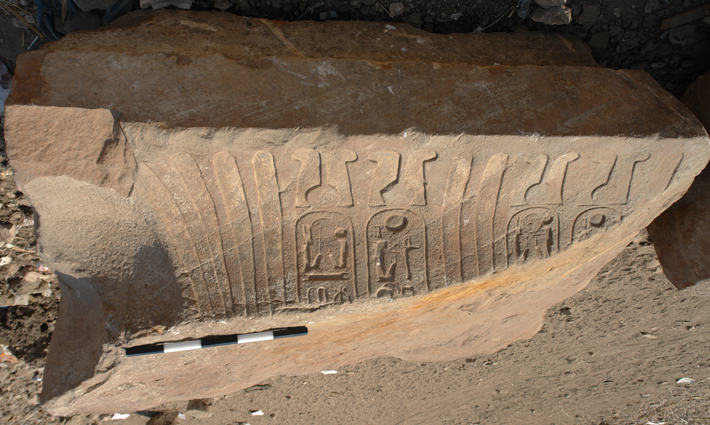
Here and there, small windows of opportunity would open up. In 2005, for example, Raue joined Egyptian colleagues excavating more than three acres of the ancient temple area ahead of planned shopping center construction in the middle of Matariya. Some of the first objects to emerge were fragments of inscribed statues that provided promising physical evidence of the city’s importance. During the excavation, Raue helped document a life-size depiction of the pharaoh Ramesses II (r. ca. 1279–1213 B.C.) dressed in priestly attire that illustrates not only Heliopolis’ religious significance but also its political function as the place where generations of rulers reaffirmed their claim to power over all of Egypt. Hieroglyphs on the statue’s base read “King of Upper and Lower Egypt, lord of the two lands / Son of Ra, lord of crowns / He lets the lord of crowns reunite with the throne of Horus.”
Other inscriptions the team unearthed demonstrate that Heliopolis’ special status as the birthplace of the gods and origin of the world helped protect it during times of religious upheaval. During the reign of Akhenaten (r. ca. 1349–1336 B.C.), who attempted to reform Egyptian worship by eliminating polytheism, Heliopolis continued to thrive. Even after Akhenaten built his own city at Amarna, carvings on stone blocks called talatat, bearing his name and that of his queen, Nefertiti, were placed at Heliopolis. “Heliopolis is the only place in Egypt with new temples and statues throughout the Amarna period. It’s the only temple we know of that is continuously open in that period,” Raue says. “The Temple of the Sun had an uninterrupted cult for at least 2,400 years. The continuity is amazing. Heliopolis wasn’t like anywhere else in Egypt.”
After that first brief campaign, Raue wasn’t certain he would ever have the chance to excavate in Heliopolis again. He spent many years working near Aswan, far to the south. Then came the Arab Spring of 2011. In the chaos that followed, Egyptian authorities lost control of the area, unleashing an unauthorized building boom. At the same time, the center of the ancient temple site became an illegal trash dump. Raue estimates that thousands of tons of garbage—a stinking layer of construction debris, animal carcasses, and burned plastic from about 20 to a shocking 42 feet thick—accumulated on top of the site of the Temple of the Sun in the space of just two years.
For Raue and Aiman Ashmawy, the head of the archaeological sector at the Ministry of Antiquities, the chaos offered an opportunity. In 2012, even before the situation in Egypt had stabilized, they returned to Heliopolis and began an ambitious joint program of rescue excavations in the parts of Matariya threatened by illegal development, which is to say, almost the entire neighborhood. For the past six years, Raue and Ashmawy have been working just ahead of the Ministry of Endowments’ bulldozers, scouring construction trenches and building sites for traces of the ancient city and its temples as part of the Heliopolis Project, a joint Egyptian-German excavation. The process sometimes resembles looking through keyholes to draw conclusions about the rooms behind. Raue can’t select his dig sites, and often has just days to work. “The best discoveries aren’t scheduled,” he says. They are looking for the footprint of the central Temple of the Sun, but also trying to understand more about the city’s end. “One of the project’s aims is to find out who gave up the temples and when and why,” Raue says. The excavations have played a role in shaping other research questions, such as how the holy city’s outer walls were constructed or what its residential precincts might have looked like.
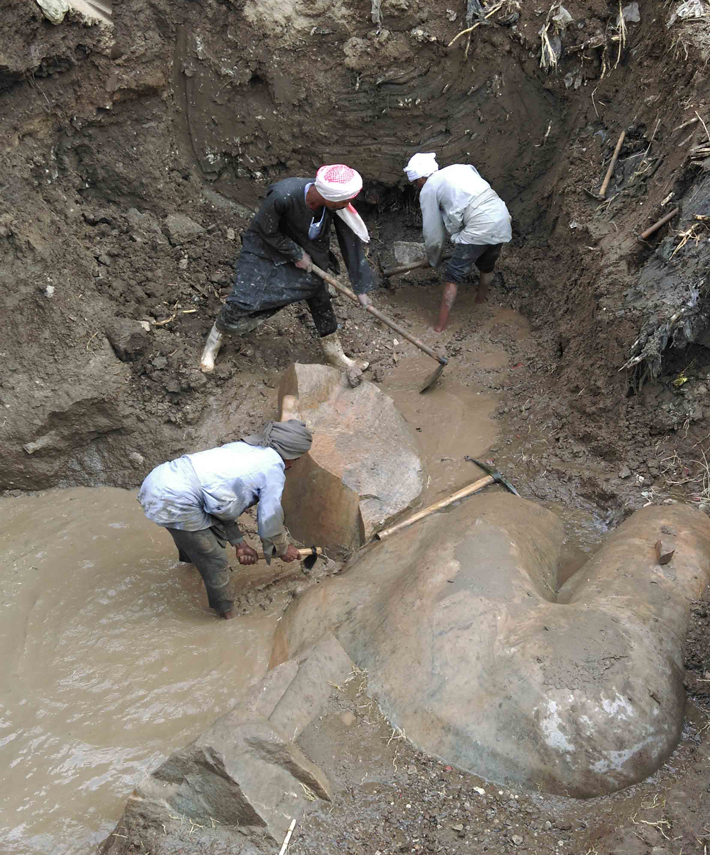
Before they did anything else, the team, together with a force of more than 100 local residents and multiple bulldozers, spent weeks removing the garbage. Underneath the refuse, they confronted six, or sometimes more, feet of modern topsoil. Another six to 10 feet of ancient loam packed almost as hard as concrete lay under that. Beneath it all, they came upon the debris left behind when Heliopolis was dismantled to serve as construction material. “Heliopolis has always been too close to Cairo,” Raue says ruefully. And that’s not all. Even once the layers of garbage and soil were removed, there was a final obstacle—much of Heliopolis’ ancient ruins are actually submerged. “All of our finds are between zero and eight feet under the water table,” Raue says. During the excavations, pumping creates small lakes, which cause huge logistical problems and added pressure for a team already under enormous constraints. For example, it took a tremendous effort to remove an eight-ton fragment of a standing sculpture of pharaoh Psamtik I (r. 664–610 B.C.) from under more than six feet of groundwater.
In 2015, Raue and Ashmawy excavated a corner of the central temple precinct. They found the foundations of walls three feet thick, with workshops and evidence of butchery. North of the temple, Egyptian teams had previously found multistory residential buildings. Raue believes that priests and thousands of support staff lived behind the city walls in extremely close quarters, packed into these high-rise mudbrick tenements. “Imagine Manhattan,” Raue says, or the densely packed brick apartment buildings that crowd in on the modern-day site. “These were houses a nineteenth- or twentieth-century Egyptian would recognize.”
Meanwhile, the Heliopolis Project has turned up workshops and small grain silos at the southeastern corner of the temple. Rough ceramic trays found near the silos suggest the existence of a bakery that served hungry priests, and a wooden scribal palette bearing a New Year’s inscription is evidence that the city’s holy character was never far from mind, even in its residential quarters. The opportunistic nature of the dig, colleagues suggest, has revealed details that an excavation focused on the Temple of the Sun might have missed. “We have a chance to understand daily life,” Quirke says. “The advantage of rescue archaeology is you get sharp glimpses of the city in its detail. We’re beginning to get snapshots that all add up to a kaleidoscope of urban life. Any opportunity to know more is really precious.”
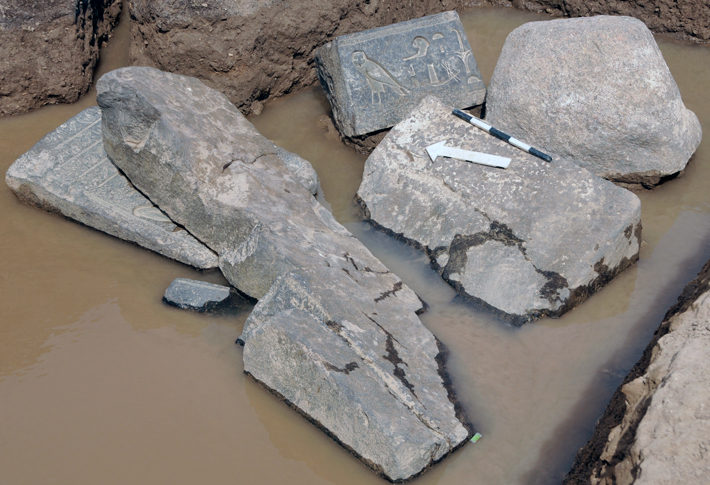
That’s not to say that the team is ignoring the spectacular statuary left behind by generations of pharaohs. When Cairenes looted the site for building materials in the Middle Ages, they took the limestone but left the remains of toppled sculptures of red granite, quartzite, and basalt in place. Among these are intact reliefs 15 feet square and granite falcons that once graced a temple gate dedicated to the pharaoh Nectanebo I (r. 380–362 B.C.). Other finds point to even more impressive monuments—a recently uncovered foot-and-a-half-long stone claw suggests the existence of a sphinx statue 50 feet long. “Whatever sculpture we get is extremely high quality,” Raue says. “Heliopolis was such an important site that we just get the best.”
The team has also uncovered evidence of smaller temples dedicated to Egyptian deities including the falcon god Horus, cow goddess Hathor, mother goddess Mut, and the king of the gods, Amun. But the sun god Ra and the Temple of the Sun were the site’s epicenter. A few rushed days of excavation in 2015 yielded pottery that helped Raue date its massive mudbrick walls, which he estimates enclosed an area of 31 acres. The dating of these walls suggests that in antiquity, too, Heliopolis was a dynamic place. In around 1500 B.C., parts of the city’s necropolis were leveled to wall in what ancient sources dubbed the “High Sand”—the exact spot where Egyptians believed the world was created, and Heliopolis’ holy of holies. This temple-within-a-temple was the center of the sun god’s cult, and, thus, of Egyptian religion.

Ashmawy, Raue, and their team are now juggling small excavations scattered across nearly a square mile of teeming urban neighborhoods. They’re just beginning to get a sense of the city of Heliopolis as a whole. Geomorphological investigations by Ghent University geoarchaeologist Morgan De Dapper reconstructed the height of the primordial hill upon which the first temple was built. Drilling in spots where they could not conduct full excavations, the team mapped archaeological layers more than 20 feet thick. Geophysical techniques are enabling Herbich’s team to look below the ground in places that haven’t yet been built over. Using differences in the electrical resistance of mud and stone, he’s able to trace and measure the temple’s foundations and walls, even under many feet of silt and groundwater. The results, guided in part by century-old surveys drawn by Petrie and his Italian predecessor, Ernesto Schiaparelli, as well as maps from the mid-nineteenth century, include sections of the city’s outer walls. Based on their width—some sections revealed by recent excavations are 55 feet across in some spots—Raue estimates that Heliopolis might have been guarded by walls up to 60 feet high. “In a flat landscape, it must have looked more like a fortress than a city,” he says. “Imagine a wall in front of you a kilometer [more than half a mile] long.” The team is also starting to envision Heliopolis’ inner temple districts. “Suddenly, we have an idea of the sacred topography for the first time,” says Raue. Understanding how the city and its temple buildings were laid out could add to what scholars know about how Egyptian religion developed. “It would be valuable to know if the design of these shrines to the sun followed those of conventional temples,” says University of Cambridge archaeologist Barry Kemp, who excavates at Akhenaten’s city of Amarna, “or whether, in deference to the visibility of the sun, the shrines were more open in plan.”

Heliopolis’ remains may soon be completely inaccessible, covered over by rapidly expanding housing projects and other construction in the booming Egyptian capital. Cairo is one of the most crowded cities in the world. With 50,000 people per square mile, it’s almost twice as densely populated as New York. Matariya, the neighborhood surrounding Heliopolis, packs more than twice that many people per square mile into brick and cinderblock tenements, many directly overlooking the open spots where Raue and his colleagues work. “It’s more under threat now. It’s like trying to stop Central Park or Hyde Park from getting built over,” Quirke says. “But Cairo is growing in a way New York and London are not. It’s remarkable there’s anything left of Heliopolis at all.”
Ashmawy and Raue’s work is a race against this seemingly inevitable loss, a struggle to excavate and document one of the most important places in ancient Egypt before it’s gone forever. “Heliopolis is not just a cult site like everywhere else,” Raue says. “It’s completely different, from its very first moment.”
Slideshow: The Obelisks of Heliopolis
The mighty stone monuments of ancient Egypt known as obelisks, a word derived from the Greek obeliskos, meaning “skewer” or “spit,” were known in Egyptian as tekhenu, which means “to pierce.” These monolithic, four-sided, pyramid-topped pillars rose high into the Egyptian sky, symbols of the sun god, Ra, and of sun worship, as well as of the power of the pharaoh and his relationship to the gods. As the center of the worship of Ra, Heliopolis at one time boasted dozens of obelisks, only one of which remains in its original position. However, not all of Heliopolis’ obelisks have been lost. At least seven were taken from Egypt and raised in metropolitan centers across the world. One goal of the Heliopolis Project, a joint Egyptian-German excavation, is to determine where the obelisks originally stood in the sacred city and how they functioned as part of its religious rituals.
